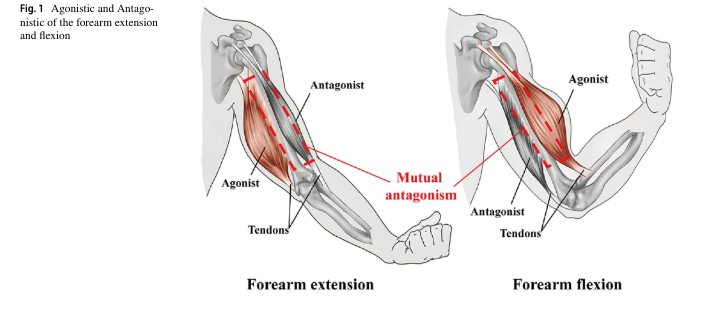Journal of Bionic Engineering (2024) 21:778–802 https://doi.org/10.1007/s42235-023-00475-2
Bio?inspired Design and Inverse Kinematics Solution of an Omnidirectional Humanoid Robotic Arm with Geometric and Load Capacity Constraints
Zhichao Zhu1 · Zirong Luo1 · Yiming Zhu1 · Tao Jiang1 · Minghai Xia1 · Shanjun Chen1 · Boyu Jin1
1 College of Intelligence Science and Technology, National University of Defense Technology, Changsha, China
AbstractInspired by the driving muscles of the human arm, a 4-Degree of Freedom (DOF) concentrated driving humanoid robotic arm is proposed based on a spatial double parallel four-bar mechanism. The four-bar mechanism design reduces the inertia of the elbow-driving unit and the torque by 76.65% and 57.81%, respectively. Mimicking the human pose regulation strategy that the human arm picks up a heavy object by adjusting its posture naturally without complicated control, the robotic arm features an integrated position-level closed-form inverse solution method considering both geometric and load capacity limitations. This method consists of a geometric constraint model incorporating the arm angle (φ) and the Global Confguration (GC) to avoid joint limits and singularities, and a load capacity model to constrain the feasible domain of the arm angle. Further, trajectory tracking simulations and experiments are conducted to validate the feasibility of the proposed inverse solution method. The simulated maximum output torque, maximum output power and total energy consumption of the robotic arm are reduced by up to 2.0%, 13.3%, and 33.3%, respectively. The experimental results demonstrate that the robotic arm can bear heavy loads in a human-like posture, efectively reducing the maximum output torque and energy consumption of the robotic arm by 1.83% and 5.03%, respectively, while avoiding joints beyond geometric and load capacity limitations. The proposed design provides a high payload–weight ratio and an efcient pose control solution for robotic arms, which can potentially broaden the application spectrum of humanoid robots.
Keywords Humanoid robotic arm · Bio-inspired design · Inverse kinematics solution · Load capacity constraint · Geometric constraint

Copyright © 2024 International Society of Bionic Engineering All Rights Reserved
吉ICP备11002416号-1









